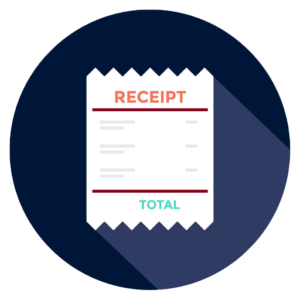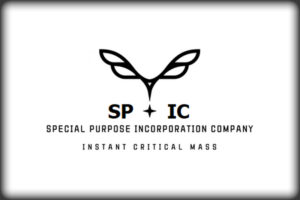In the early days of business funding, before 1995, the predominant method for raising capital was through “funding rounds.” This approach, although straightforward, had several limitations, especially as companies grew more complex and investors became more sophisticated in their expectations and risk tolerance.
In 1995, the landscape shifted with the introduction of a new approach known as the “Incremental Price Method” that I invented and recently patented.
This article explores the two methods, their structures, advantages, and drawbacks, and how the Incremental Price Method addressed the inherent challenges of the traditional funding rounds system.
The Traditional Funding Rounds Method
The funding rounds method was the standard approach up until the mid-1990s. Here, companies raising capital would establish a single price for their securities based on the company’s current valuation. Investors in a funding round would buy into the company at this fixed price, which was thought to reflect the company’s financial health, growth potential, and market standing at the time.
Under this method, the process for pricing shares was relatively simple: each time a company sought new funding, the price of its shares was set based on its latest valuation. If the company’s prospects appeared positive, this price might increase; however, if the company was struggling or failing to meet its goals, the price might decrease.
Key Challenges of the Funding Rounds Method:
- Variable Pricing Based on Company Performance: One of the most significant issues with this approach was the way it handled financial instability or setbacks within a company. If the company experienced challenges—whether through poor management, missed objectives, or simple cash shortages—new investors could buy shares at a lower price than those who had invested earlier. This situation could be problematic, as early investors who bore the most risk might see their shares devalued, while new investors gained more attractive entry points.
- Investor Hesitancy and Slow Processes: Another challenge was that potential investors often hesitated to be “first in” during a funding round. If each round came with a risk of future price declines, many investors preferred to wait, hoping to secure a more favorable price later. This behavior led to a sluggish fundraising process, as companies struggled to attract early investors and were often stuck in slow-moving rounds of capital raises.
Due to these issues, the funding rounds method eventually became less favorable, as both companies and investors sought a more efficient, fair, and strategic model for funding growth.
Introducing the Incremental Price Method: A New Paradigm
In 1995, a transformative approach to funding was introduced with the “Incremental Price Method.” This new method shifted away from setting a single fixed price per funding round and instead embraced a more dynamic pricing strategy. The goal was to create a structure that encouraged early investment while still rewarding those who bore greater initial risk.
How the Incremental Price Method Works:
- Tranches with Increasing Prices: In this method, a securities issue is divided into several tranches, typically ranging from three to five. Rather than keeping the price consistent across each tranche, the cost of securities within each tranche increases by a set percentage, usually around 30% more than the previous one. This incremental increase in price creates a progressive valuation for the company, aligning investor expectations with the company’s anticipated growth trajectory.
- Profit Opportunities for Early Investors: When an initial tranche is sold, early investors who may wish or need to exit the investment can sell their securities at the new tranche price or just below it. This arrangement allows early investors to exit at a profit, as subsequent tranches attract higher prices. It also reduces the risk of value loss for earlier investors, as the staggered pricing diminishes the likelihood that later investors will be able to buy shares at significantly reduced prices.
Benefits of the Incremental Price Method:
- Price Stability and Confidence for Early Investors: The Incremental Price Method addresses the key drawback of the funding rounds method by protecting early investors from steep price reductions if a company faces financial difficulties. Since the price in each tranche increases incrementally, new investors buy shares at a premium, acknowledging the risks taken by earlier investors.
- Reduced Investor Hesitancy and Faster Funding Cycles: By providing a clear roadmap for increasing prices, the method encourages more rapid investments. Investors are incentivized to enter the funding rounds early to take advantage of lower prices, leading to quicker funding cycles and improved cash flow for the company.
Ensuring Fairness: Equal Treatment and Different Situations
An essential consideration in any funding method is the principle of equal treatment for all investors. Equal treatment, however, does not mean identical treatment. According to this principle, while all investors in the same situation should receive equal terms, those in different situations can, and arguably should, be treated differently.
For instance, an investor who buys into a company today is in a very different position than one who invested six months or a year ago. Market conditions may have changed, the company may have made significant progress, or new risks may have emerged. Thus, it is fair for new investors to pay a premium over earlier investors who initially took on more risk. This premium reflects the added stability, performance data, and reduced uncertainty that later investors enjoy.
Exceptions to Equal Treatment: There may be exceptional circumstances where equal pricing is maintained. However, these situations are generally rare and arise only in unique cases, such as long-standing contractual agreements or specific preferential conditions.
Why the Incremental Price Method Changed the Funding Landscape
The Incremental Price Method represents a more nuanced and fair approach to raising capital. By structuring investment opportunities in tranches with progressively higher prices, it aligns better with the needs of both investors and companies:
- For companies, it facilitates faster capital infusion and reduces the risk of prolonged funding rounds.
- For early investors, it provides a built-in mechanism for potential profits and ensures that later investors acknowledge the higher risk they undertook by paying a premium.
Ultimately, this method has allowed for a more equitable approach to investing, acknowledging the varying levels of risk and commitment made by each participant. It demonstrates that funding methods can evolve and adapt to meet the needs of a growing and increasingly sophisticated investment landscape.
The Incremental Price Method remains a powerful model, reshaping how companies approach capital raises and providing a clearer framework for rewarding risk-taking investors while maintaining fair treatment across different stages of investment.







